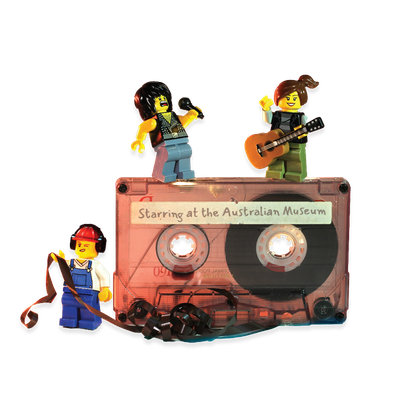Your search returned 12426 results
By Page Type
By Tag
- fish (966)
- blog (696)
- fishes of sydney harbour (401)
- First Nations (297)
- Blog (236)
- AMRI (169)
- archives (164)
- Eureka Prizes (145)
- Aboriginal and Torres Strait Islander (135)
- insect (126)
- Ichthyology (124)
- geoscience (109)
- minerals (102)
- climate change (99)
- podcast (94)
- Fish (91)
- Anthropology (89)
- International collections (80)
- Minerals Gallery (78)
- wildlife of sydney (78)
- Labridae (77)
- frog (73)
- gemstone (70)
- photography (65)
- history (63)
- Mollusca (60)
- gem (59)
- staff (59)
- Birds (56)
- Gems (56)
- Indonesia (56)
- education (55)
- shark (55)
- AMplify (54)
- people (53)
- earth sciences (50)
- past exhibitions (50)
- exhibition (49)
- Gobiidae (48)
- sustainability (46)
- Pomacentridae (45)
- Serranidae (44)
- lifelong learning (42)
- science (42)
- Earth and Environmental Science (41)
- Syngnathidae (41)
- Ancient Egypt (40)
- Bali (40)
- bird (40)
- dangerous australians (40)
-
Lithography in the time of John Gould
https://australian.museum/learn/collections/museum-archives-library/john-gould/lithography-in-the-time-of-gould/The principle of lithography was discovered in Germany in 1798 by Aloys Senefelder. The process came into widespread use in the 1820s as commercial printers and artists realised its many advantages.
-
John Gould and his contribution to science
https://australian.museum/learn/collections/museum-archives-library/john-gould/gould-and-his-contribution-to-science/John Gould's two great contributions to science were taxonomically describing Charles Darwin's Galapagos finches and his descriptions of Australian fauna.
-
Types of types
https://australian.museum/learn/animals/fishes/types-of-types/Type specimens are the name bearing specimens upon which scientific names are based.
-
Preparation for death - Dorin Hart
https://australian.museum/about/history/exhibitions/death-the-last-taboo/preparation-for-death-dorin-hart/A celebration of Ralf's life at a home funeral, told by Dorin Hart.
-
Disposing of the dead - an introduction
https://australian.museum/about/history/exhibitions/death-the-last-taboo/disposing-of-the-dead/The treatment of the dead through burial, cremation, preservation, and exposure of the body to carrion-feeders or the elements reflects a diversity of attitudes and beliefs about death and what it means. It is also a practical way of controlling the decomposition of the corpse.
-
Burial - Pukumani, Tiwi Islands
https://australian.museum/about/history/exhibitions/death-the-last-taboo/burial-pukumani-tiwi-islands/For the Tiwi people of Bathurst and Melville Islands, Pukumani means taboo and applies to the funeral ceremonies, the possessions of the deceased, the close relatives of the deceased and the gravesite.
-
Burial - Malagan ceremony, New Ireland
https://australian.museum/about/history/exhibitions/death-the-last-taboo/burial-malagan-ceremony-new-ireland/The people of northern New Ireland, Papua New Guinea, honour the dead through Malagan ceremonies. These ceremonies assist the souls of the dead to pass into the spirit world.
-
My options after death
https://australian.museum/about/history/exhibitions/death-the-last-taboo/my-options-after-death/The options currently available to people in Australia after their deaths are burial (in the earth or water) and cremation. There are many variations on the type and cost of the container and the final destination for the body or ashes.
-
Body disposal - legal procedures
https://australian.museum/about/history/exhibitions/death-the-last-taboo/body-disposal-legal-procedures/Certain procedures must be carried out in order to dispose of a human body, including arranging for a funeral, certifying that a person is dead and what the cause of death was, as well as registering the death.
-
Who ends up in a morgue?
https://australian.museum/about/history/exhibitions/death-the-last-taboo/who-ends-up-in-a-morgue/Of the 128 500 people who die in Australia every year, only 13.4% of deaths are referred on to the coroner's office and even fewer will require a coronial investigation and autopsy. Not all deaths need to be investigated. There are a variety of reasons why a death might be reported to the coroner.
-
Discover more
2025 Australian Geographic Nature Photographer of the Year
Special exhibition
Free entry
Now open -
Discover more
Unfinished Business
Special exhibition
Free entry
Now open -
Discover more
Wansolmoana
Permanent exhibition
Free entry
Open daily -
Find out more
Burra
Permanent kids learning space
Free entry
10am - 4.30pm![]()
-
Discover more
Minerals
Permanent exhibition
Free entry
Open daily![]()




